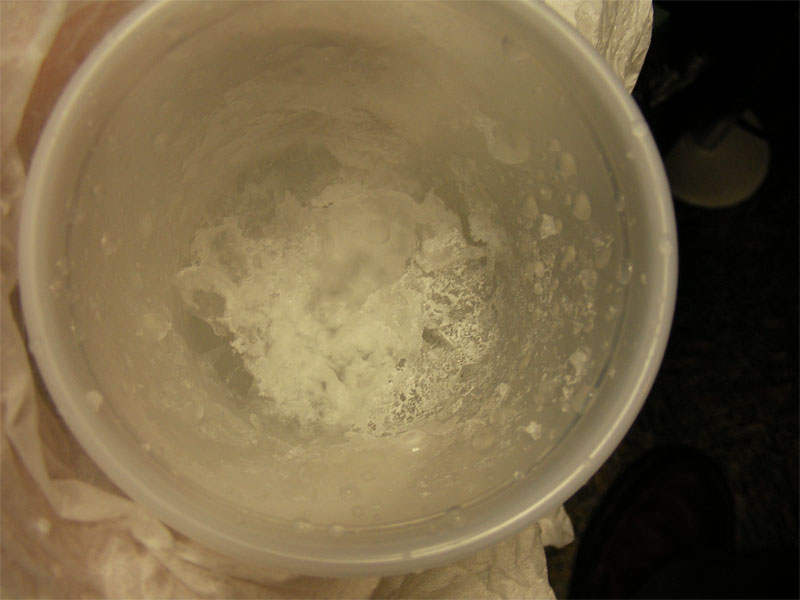Canned Air and Bottled Water
Gas duster (also incorrectly referred to as canned air) is a product consisting of liquefied difluoroethane, trifluoroethane, or tetrafluoroethane in a spray can. Commonly used to clean intricate objects such as keyboards and camera equipment.
Bottled water is drinking water generally purified by mundane means and repackaged in such a ways as to demand a premium price from consumers.
Mystech is a blogger of astonishingly low talent and perpetual boredom.
Combine the three and you get desktop cryogenics. The pressure at which the gas duster unloads its subthermal cocktail tends to blast water everywhere, but I wonder if with a bit of practice and control if you could do some abstract freeze sculpting?
Image after the cut.

Yes, I know liquid nitrogen is much cooler, and if you can secure a large cannister for me after “the last incident”, I promise to upgrade.







Next see if you can preserve a squirrel…
Are you flipping the can over and dispensing the liquid directly? If so, you might be able dampen the force by spraying onto a sponge or other porous solid.
You know, that idea has merit… Canned Air tends to come with a long flexible hose. I could snake that down the vermin’s throat. It could take several bottles to thoroughly freeze it though. I’d best buy a whole case.
Yup, inverted the can to get the “good stuff” out. I like the sponge idea. Unfortunately the only sponge I have at the moment is the rancid company breakroom/kitchen sponge.
Currently, I’m looking for a rubber balloon. I’d like to put a tiny bit of water in it and use the canned air hose to see if I can blast it against the inside of the balloon and make a hollow ice sphere. I have little doubt that this will NOT end in a small explosion and a shower of ice shards.
An aquarium aerator (bubble stone) might work to disperse the good stuff, though it might crack also.
Your bubble stone idea gave me an idea. I have some porous foam at home (basically open cell for a water filter). I think I’ll use that as I’m less afraid of flying foam than flying rock. 🙂
The balloon sort of works… the rubber gets brittle very fast and results in a loud, office-unfriendly bang. But sure enough, you get an irregular coating of ice on the inside surface. I need to find out how fast this video camera can film. Maybe it can capture some frames.
We used to play with the refrigerants used for thermal testing satellite systems. My favorite was taking a rubber eraser and sloshing it around in liquid nitrogen, then sliding it across the tile floor of the lab, like a super accelerated hockey puck that shattered into tiny pieces when it struck a barrier.
And then there was the time a coworker decided that someone was out of line keeping their lunch cool in one of the test “ovens” and turned the temp down to -15 degrees F. The person found their sandwich frozen and threw it at the instigator, missed, and shattered a perfectly good sandwich as it hit the wall.
Be careful with that stuff. You can get some nasty freeze burns. Personal experience. 🙂